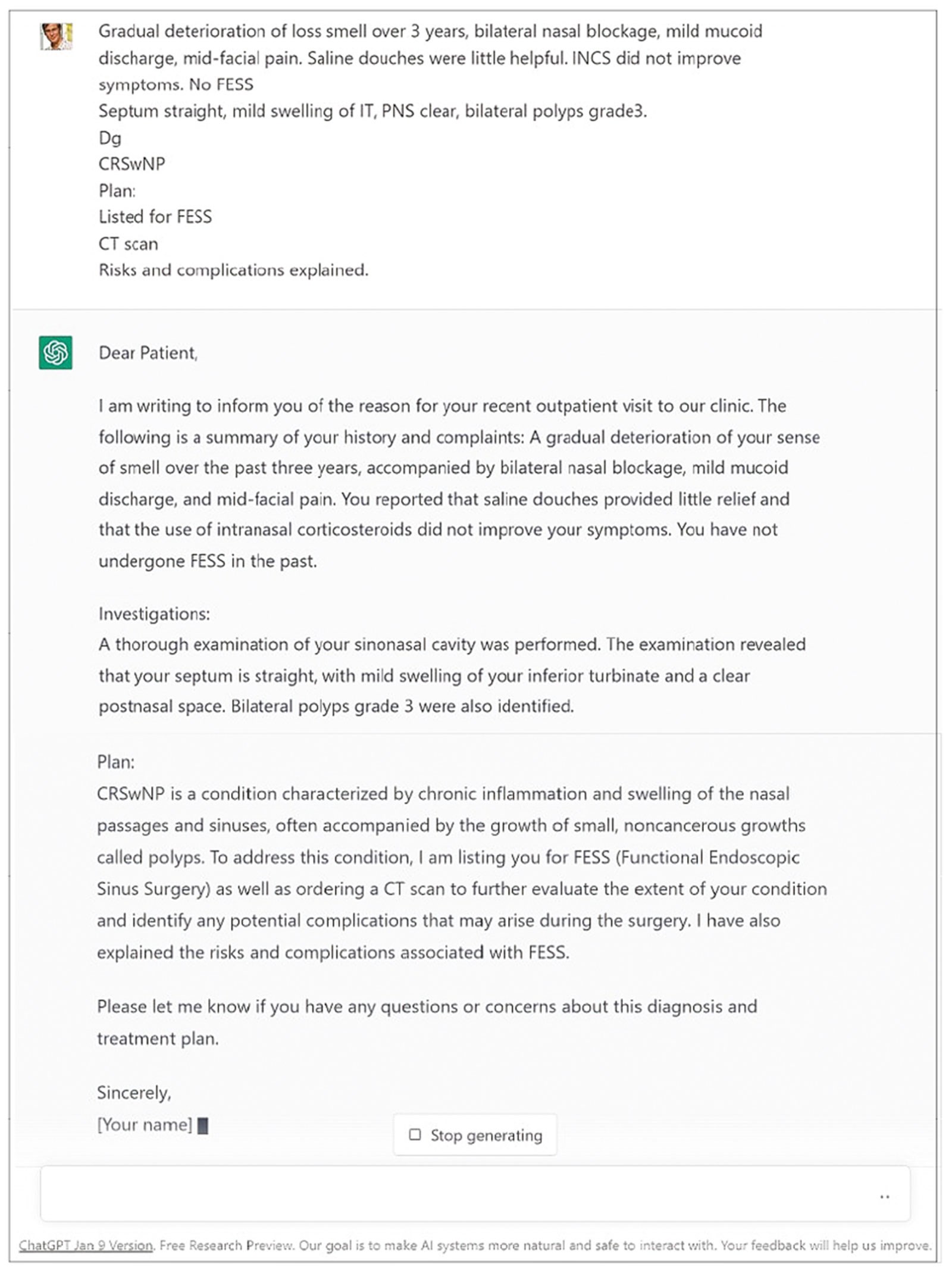Artificial Intelligence (AI) is taking the world by storm at the moment. We hear how AI might influence the letters we write in clinic.
As a clinician, the process of writing a clinical letter can be time-consuming and challenging. It requires synthesising complex medical information to effectively document and communicate the encounter to both other clinicians and the patient themselves. It is also often an additional repetitive step to dictate/generate and then later analyse or review the generated letter. Fortunately, the use of language models, such as ChatGPT, has the potential to greatly improve the efficiency and accuracy of the writing process.
What is ChatGPT? It’s essentially an intelligent text box where you enter a written request. The chatbot then interprets it and assimilates an answer using artificial intelligence (AI) and then automatically generates an answer. Even better, it does so in a matter of seconds and can analyse all the available information on the worldwide web to help it generate its answer. You want to know where to go on holiday? You could enter your favourite destinations, how far you want to travel and how much you want to spend, and it will make some good suggestions. You want a story or joke about some specific characters – it can generate that for you. You want it to write your clinic letters for you – we have found it can do that too.
ChatGPT, which describes itself as a large language model trained by OpenAI (in whom Microsoft have recently invested $10 billion for a 49% share), was used to generate a draft clinical letter from notes taken in a clinic consultation. Using the language model to generate a clinical letter, we used the patient’s clinic notes (documented in note form during the consultation with identifiable information removed). The notes were then directly copied and pasted into the language model, which generated a draft of the clinical letter. The draft was reviewed by the medical team for accuracy and completeness, and any necessary corrections or revisions were made.
"The language model could accurately generate a draft of the clinical letter from the notes provided, and the time it took to generate the draft was instantaneous"
The language model used in this study was trained on a diverse range of clinical notes, including those related to a patient diagnosed with chronic rhinosinusitis with nasal polyps (CRSwNP) who was scheduled for functional endoscopic sinus surgery (FESS). The notes were anonymised to protect patient confidentiality.
To then format the clinical letter, AI-generated guidelines were used. This included recognising common medical abbreviations (PMH, HTN etc) and organising the letter into paragraphs with clear titles such as History, Investigations, Diagnosis, and Plan. Each paragraph had a clear and concise title that summarised the content of the paragraph. The chatbot also generated a short two-sentence description of the diagnosis at the beginning of the ‘Plan’ section to provide context for the treatment plan.
The language model could accurately generate a draft of the clinical letter from the notes provided, and the time it took to generate the draft was instantaneous. The input to the model was only the simple shorthand clinic notes containing abbreviations and the output was a letter in full sentences. An example of the input and output for this case study is provided in Figure 1. This has now been repeated in over 50 patient consultations, many of whom have been emailed their clinic letter immediately after their consultation.

Figure 1. An example of the input and output in ChatGPT to compose a clinical letter.
The potential benefits of using a language model to generate clinical letters are clear. By streamlining the writing process, this technology offers an easy, efficient, and currently free method of clinical letter writing. Patients highly value receiving a clear post-consultation letter, and doctors find the creation of quality and useful letters to be daunting, especially given the importance of this communication modality. By using a language model, clinicians can improve the accuracy and efficiency of their clinical letter writing, while maintaining the important personal touch of a letter written by a medical professional.
In conclusion, the use of language models such as ChatGPT has the potential to revolutionise the clinical letter-writing process. By providing clinicians with an efficient and accurate way to document and communicate their encounters with patients, this technology has the potential to improve the quality of care and outcomes for patients. While the technology is not intended to replace the work of a doctor, it is a valuable tool that can assist clinicians in the writing process, enabling them to focus on other important aspects of patient care.







